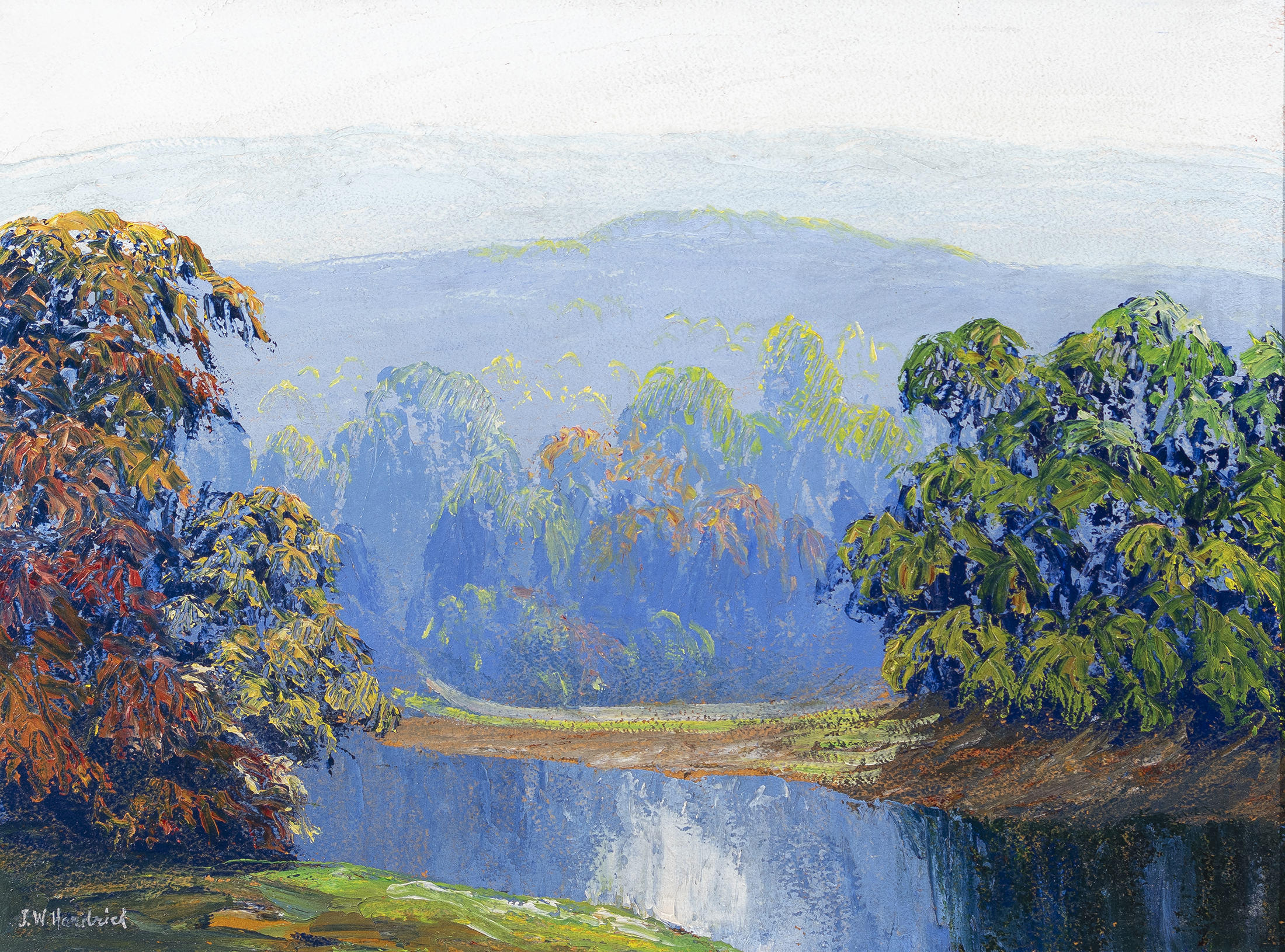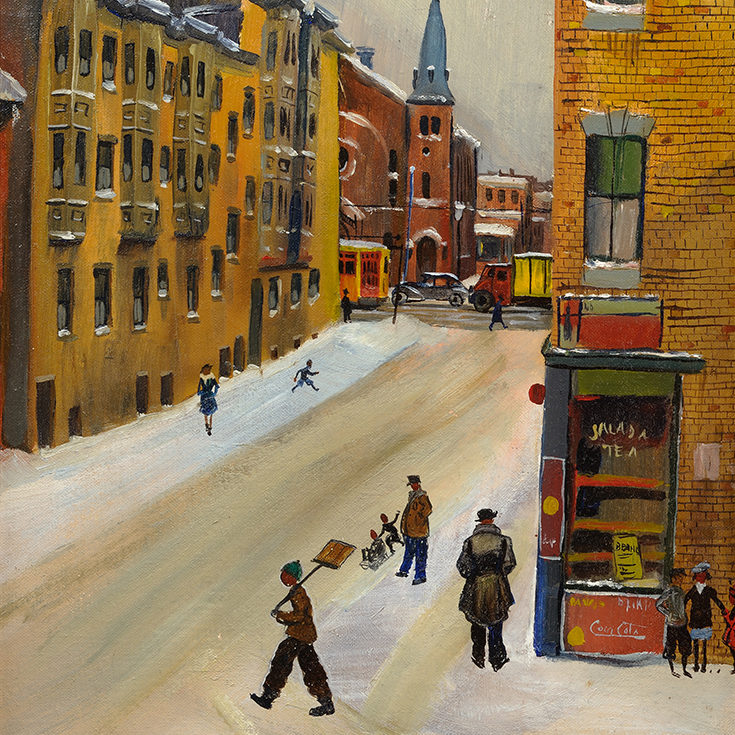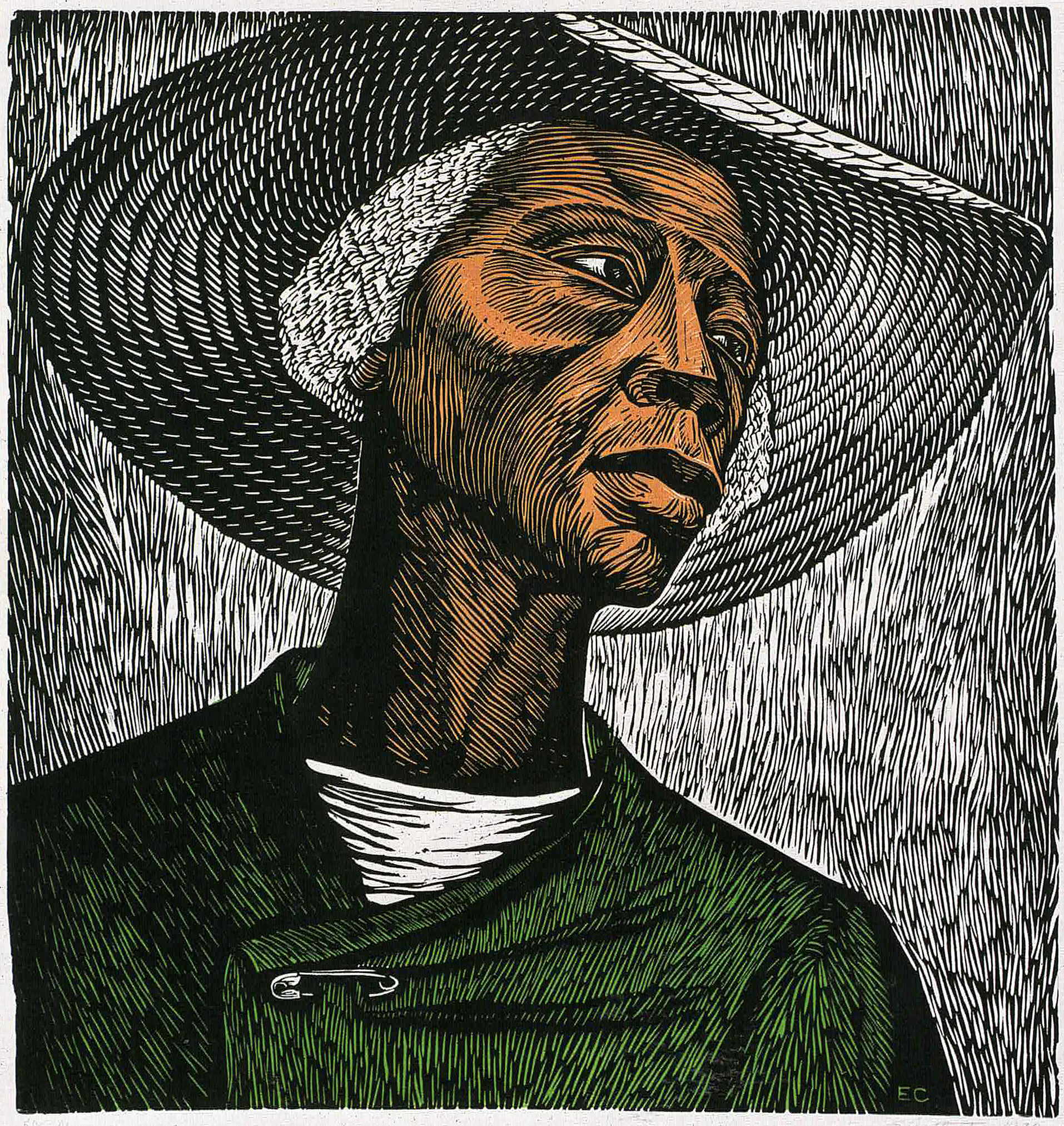 John Hardrick was born in Indianapolis to Shepard and Georgia Etta (West) Hardrick in 1891. He showed a talent for art as a young boy, and his work was brought to the attention of the owner of a local art store and framer, Herman Lieber, who helped the boy enroll in children’s classes at the John Herron School of Art (interestingly, many of the frames one will find on his paintings today were made by Lieber and bear the label).
John Hardrick was born in Indianapolis to Shepard and Georgia Etta (West) Hardrick in 1891. He showed a talent for art as a young boy, and his work was brought to the attention of the owner of a local art store and framer, Herman Lieber, who helped the boy enroll in children’s classes at the John Herron School of Art (interestingly, many of the frames one will find on his paintings today were made by Lieber and bear the label).
As a teenager, he began studying with important Hoosier Group impressionist painters, William Forsyth and Otto Stark. He worked at a foundry at night to put himself through John Herron (he executed a well known painting of this subject matter, illustrated in the catalog for the exhibition, A Shared Heritage, Art by Four African Americans (Hardrick, Scott, Woodruff, and Majors), IMA, Warkel and Taylor, p. 59).
In 1914, he was married to Georgia Ann Howard and held his first exhibition, which was successful. He shared a studio on Indiana Avenue with Hale Woodruff for some of that year, but increased financial pressures caused him to stop painting, and take a job in his family’s trucking business. When he resumed painting, he exhibited at the Art Institute of Chicago in 1927. One of his paintings, Little Brown Girl was purchased by a group of supportive black citizens and donated to the Herron Art Institute for their permanent collection. It currently hangs at the Indianapolis Museum of Art. Hardrick exhibited at the Harmon Foundation in New York City in the years 1928-31 and 1933, and in 1929 at the National Gallery of Art in Washington DC.
The catalog for the 2nd Annual Exhibition of Contemporary Negro Art in San Diego in 1928 had this to say about Hardrick,
In spite of acute poverty, this young man has the faculty of discerning beauty in everything, being able to face all his adversities with a smile that conceals the feeling within, at the same time he possesses a personality which strangely draws people to him.
Additionally, he exhibited at the Hoosier Salons in 1929, 1931, and 1934, which were then held in Chicago at Marshall Field and Company; he won first prize for a portrait at the Indiana State Fair in 1934; and he participated in the American Negro Exposition in Chicago, 1940. The Civil Works Administration commissioned Hardrick to paint a mural at the Crispus Attucks High School in 1934, but it was rejected by the principal because it depicted black foundry workers, not doctors and lawyers. Hardrick’s health declined by 1941, and he worked as a cab driver. He would keep supplies in the trunk of his cab, and while waiting for fares, quickly paint local street scenes; later, he would also offer the paintings for sale from the trunk of his cab. (REF: Tom Davis, research for the Crown Hill Cemetery, Indianapolis)
Hardrick’s landscapes are derived from the many trips he took to Brown County, about fifty miles from Indianapolis. He traveled to the area at the peak of the autumn season, when the leaves were at the height of their color; during the summer when the sun was bright and hot; and in the winter when the ground was covered with snow. He did not sketch or paint during these visits . Instead, the artist took in the different scenes and committed them to memory. (REF: A Shared Heritage, Art by Four African Americans, IMA, Warkel and Taylor, p. 41).
He applied his paint very thickly, using a palette knife to create a tactile surface. He relied on a brush only to blend or add a shape, and use his thumb to mold the paint as if he were shaping a sculpture. (Ibid, p. 41) Hardrick worked quickly, beginning at the top of the canvas and working down. He was more concerned with the atmosphere and expression of the landscape than the descriptive qualities, thus following in the tradition of earlier African American landscape painters, Bannister and Duncanson. His landscapes were romanticized versions of his memories of his visits to the country. He blended his own paint when possible, and had a very distinctive palette.




